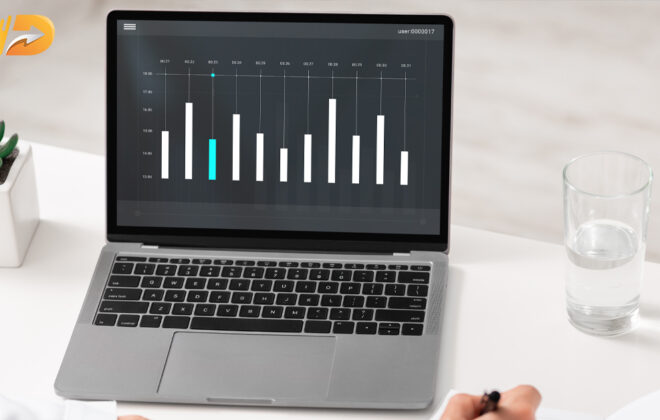Instagram Hashtags – How to Grow Your Followers
Instagram users seem to have one of two polarizing viewpoints on hashtags for growing their followers. There are two types of hashtag users: those who love to use them throughout all of their posts and those who avoid them like the plague. Although hashtags help spread your posts, they don’t necessarily help you increase their visibility. There is a 12.6% higher engagement rate for posts with more than one hashtag, according to simply measured.
Hashtags are an integral part of Instagram’s design. Organizing and filtering Instagram’s content with hashtags is perhaps its main strategy. The average Instagram user uses over 30 hashtags in each post, whereas Twitter users usually use fewer hashtags.
Nevertheless, you do not need to use 30 hashtags in your post just because you can. It doesn’t make any sense to use pointless hashtags in order to meet your hashtag quotas. If you wish to use hashtags on Instagram effectively, choose relevant hashtags that will benefit other Instagram users. When you use irrelevant hashtags, you have a chance of getting an Instagram shadowban since the system will consider you spam.
Hashtags: What do you need to know?
Every Instagram post should contain at least 30 hashtags to help your content reach a wider audience. You might also use hashtags #summer, #travel, and #yatching if you share a picture of yourself enjoying the sun while sailing a Yacht. Your post will be arranged by Instagram based on your tags. If someone searches for these terms, your post will come up (at least until too many other users upload new posts that use the same search terms, which will move your article down the user’s feeds).
Hashtag Types You Should Employ
1. Use Trendy Hashtags to Get More Views
It is common to use a lot of hashtags on social media. It is possible, however, that hashtags that have become popular will be overused, making your messages difficult to find. Using hashtags that other people use will result in your post appearing in search results.
With Instagram’s new follow features, users can now follow certain hashtags, which will enable posts using those hashtags to reach a wider audience.
People will usually find your post when they enter a hashtag into a search engine. Many people will follow you on Instagram if you post content similar to that, so they won’t miss out on future posts.
The usual disclaimer applies. Trending hashtags are pointless if they are unrelated. At the present moment, the hashtag “summer” appears to be trending. Ideally, it would be used in any article that hinted at summer. This would not be appropriate for pictures of your friend snowboarding. You wouldn’t hashtag a picture of a beautiful scene with a #selfie.
2. To reach your ideal audience, use extremely targeted hashtags
In addition, you must sprinkle your content with a few sparsely used but extremely pertinent hashtags. Despite the fact that not many people use these hashtags, you know that the ones who do will be the ideal audience for your account.
Your LOTR-related posts are likely to be seen by anyone who searches for such a hashtag. There are already 1,812,932 posts in #lotr that you should certainly contribute to. Your post should have a general hashtag, followed by more focused hashtags that are relevant to the content of your post. Consider using other, more niche hashtags such as #foodlove, #dinnertime, #dessert, or even more specific ones related to food in addition to the popular #food hashtag.
The Best Hashtags to Use
A post containing 30 hashtags may seem unusual at first glance. When you discover that every post can use the same hashtags, it becomes even more obvious that not every post can simply utilize those hashtags. Instagram users should collect a large number of hashtags if they upload content frequently.
Among the ways to locate appropriate hashtags are:
Search Instagram using the search feature. When you click the Tags tab, you will be able to enter a keyword relevant to your post. Once Instagram begins using hashtags, it will use a variety of them. Locate pertinent tags that are somewhat used and won’t make your material vanish from the web instantly.
Your industry’s influencers will use hashtags that you should use as well.
Examine what your competitors are using for non-branded tags. To make sure the hashtags you’re using don’t belong to their campaigns, make sure to check their posts first.
Look at the posts containing the hashtags you think work best. Can you tell me what other hashtags these postings are aiming for? Does your brand benefit from any of these tags?
Make Your Bio Hashtag-Friendly
In its latest update, Instagram added the option for users to insert clickable hashtags in their profiles. From your bio, you can connect to all the posts using your hashtag, which is a great opportunity for you to brand yourself.
Moreover, you might be able to access your company’s hashtags by clicking on them. In your bio, for instance, if you work in tourism, you can include clickable hashtags that are particular to your region.
The ability to connect to specific hashtags for their clients from their profiles might be especially helpful for influencer marketers.
Instagram Stories: Add Hashtags
It’s an excellent way to interact with your followers (or those of your influencers) on Instagram. Hashtags can help people discover your stories. In the same way as any hashtag on Instagram, your Stories will appear in relevant hashtag searches.
Instagram hashtags: special types
Generally, Instagram hashtags are topical and general. Essentially, anyone can use them, as long as the topic is relevant.
There are, however, some hashtags that serve a very specific purpose.
1. Brand Hashtags
It is common for brands to develop distinctive hashtags associated with their products or brands. When sharing pictures of a bottle of Coca-Cola, users are encouraged to use the hashtag #shareacoke. Their work often encompasses sponsored Coca-Cola influencer campaigns (but not always).
Customer reactions to brand hashtags are more likely to come from people who have already become acquainted with the brand.
Most brands have found that tying a tagline or phrase to their brand works better than using the brand’s name as a hashtag. Unlike #cocacola, #shareacoke sounds less commercial. Consumers should be able to identify your company’s identity via your brand hashtag. Branded hashtags will enable your audience to link concepts.
2. Category Hashtags
It is important to note that although these tags may be generic, they are related to the primary niche that your post belongs to. Use hashtags like #marathon and #running, for example, if you publish a photo of yourself running the Boston Marathon.
A category hashtag is generally not associated with a specific brand. There is much less concentration of people searching for that hashtag, and it is possible that many of them do not know you. They frequently have no idea that you exist. The best way to get your posts noticed is to strike a balance between prominent category hashtags and trendy tags, which can drown your posts in a sea of activity. You should focus on hashtags for your target demographic that are popular among a limited number of users. Consider using hashtags that are relatively focused but still popular enough to justify your efforts.
3. Event Hashtags
Discussions about a particular event can be gathered using hashtags. Among the possibilities are television shows, such as #gameofthrones, sporting events, like #worldcup, and local events, such as #sxsw.
Producing posts that target pertinent event hashtags makes sense whenever there is a relationship between an event and your target audience.
4. Campaign Hashtags
Short-term brand hashtags resemble campaign hashtags in many ways. Even though your company might have a hashtag, it’s specific.
Marketing campaigns typically have their own hashtags that pertain only to that campaign. A campaign hashtag might be developed for a particular product launch. The campaign hashtag would be utilized by your brand and any influencers you work with in marketing posts related to the launch.
Monitor the Performance of Your Instagram Hashtags
As we covered in the article “4 Benefits of an Instagram Business Profile,” having a business profile gives you access to Instagram Insights. The analytics and performance data they have access to are significantly more extensive than those of the average Instagram user. Using Instagram Insights to analyze hashtag efficacy is one of its helpful features. Increased post views and impressions are indicators of the success of your hashtag campaigns.
You can see this information by clicking or tapping “see Insights” in a post. Instagram Insights provides impressions for a post, broken down by source. Impressions from hashtags are also included. Although this won’t tell you exactly how well a particular hashtag performed on the post, it will give you a general idea.



